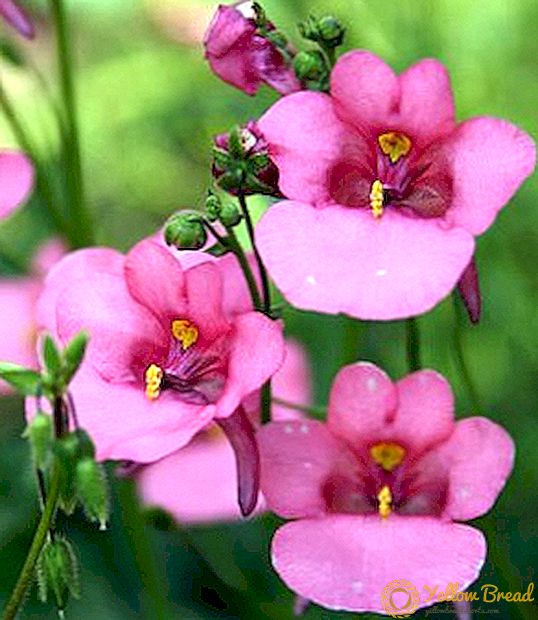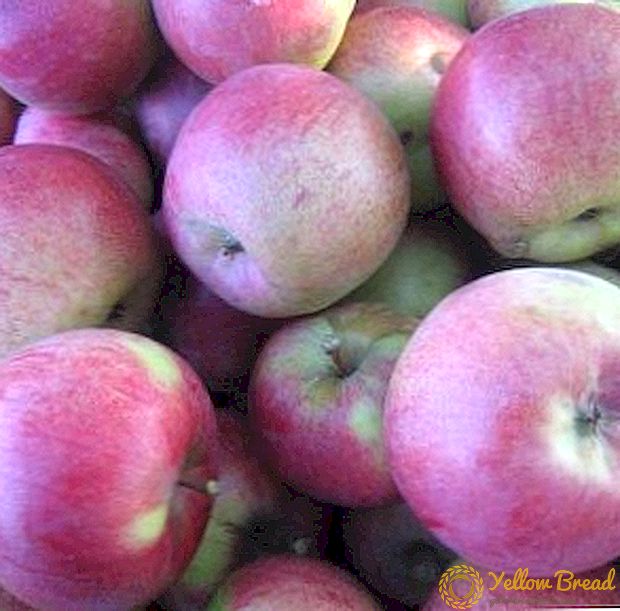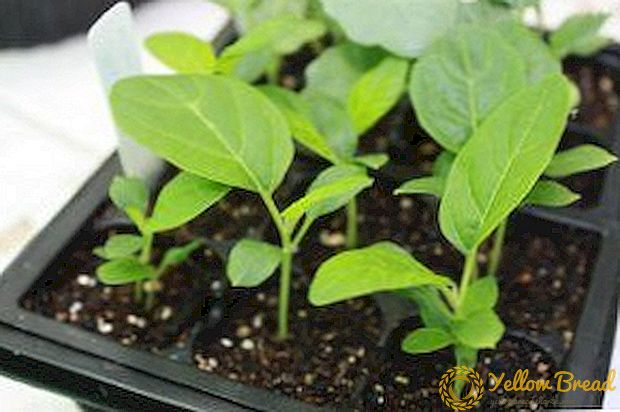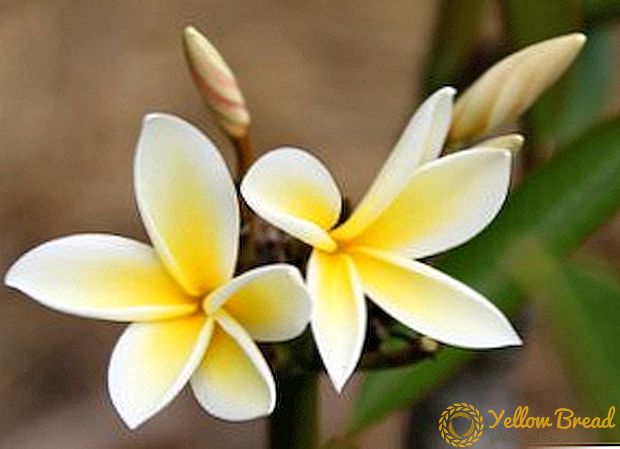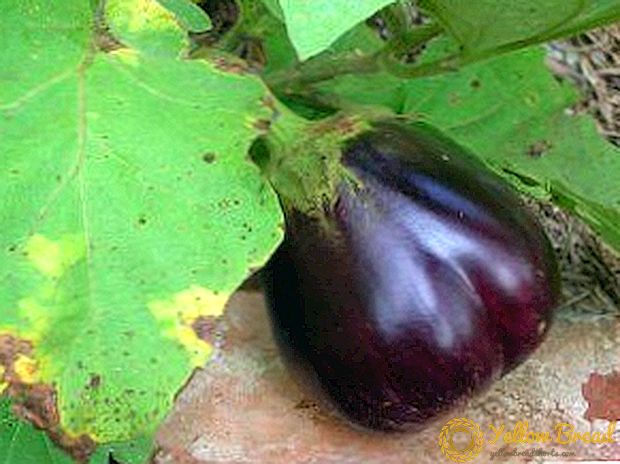 One of the main conditions for obtaining a rich harvest of eggplants is timely and proper fertilizer.
One of the main conditions for obtaining a rich harvest of eggplants is timely and proper fertilizer.
It is important to know what and when to feed, so that it gives a positive result.
- Features eggplant fertilizer
- Calendar feed for summer resident
- Mineral and organic fertilizers
- Mineral feed
- Eggplant Organics
- Features fertilizer seedlings and adult bushes
- Seedling
- During flowering
- During fruiting
- Features fertilizing culture on fertile and poor soil
Features eggplant fertilizer
Eggplant fertilizers can be used exclusively for treating the root system with specially prepared solutions or dry mix. The use of irrigation method and the use of fresh manure is strictly prohibited.
The use of irrigation method and the use of fresh manure is strictly prohibited. 
This can lead to wilting and death of the plant at a young age. If phosphorus and nitrogen-containing fertilizers get on the eggplants, wash them with water as soon as possible.
Calendar feed for summer resident
In order for the plant to be healthy and well fruited, it is necessary to adhere to certain terms of fertilizer.
The first feeding - no earlier than 15 days after disembarkation. If you fertilize a bush earlier, it may adversely affect its still weakened root system.
Subsequent feeding should be carried out based on the condition of the soil. In total, for the season can be performed from 3 to 5 activities for fertilizing plants. As a rule, they are held after planting seedlings, during the flowering period and during the fruiting period. If during the autumn period compost was added to the ground, then it can be limited to three additional feedings.
Mineral and organic fertilizers
To obtain a good harvest, you must alternately use mineral and organic fertilizers. Let us dwell on each group of dressings.
Let us dwell on each group of dressings.
Mineral feed
Lack of trace elements can affect the growth of eggplant. We offer to understand what individual components affect.
- Nitrogen. Essential for shrub growth. With its lack of growth of the bush is slow,which further affect the ripening of the fruit.

- Phosphorus. Thanks to this element, the root system of the plant develops correctly. It influences the development of ovaries, contributes to their formation. With the help of phosphorus fruits ripen faster.

- Potassium. Participates in the process of formation and growth of eggplant. It helps to increase the resistance to the appearance of plant diseases and its reaction to sharp temperature fluctuations.

- Manganese, boron, iron. Needed to improve the quality of vegetables and increase yields.
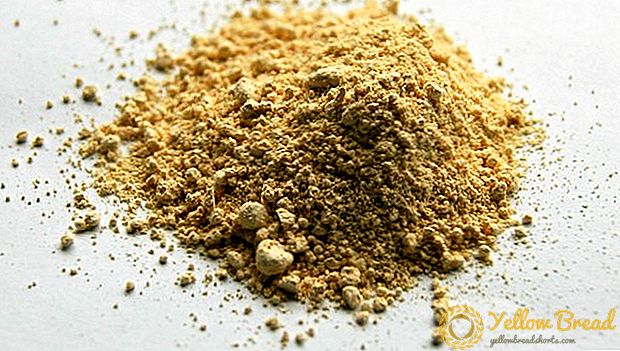
Do not forget that all fertilizers should be applied according to the instructions, since their lack or excess can harm the plants.
Eggplant Organics
The following fertilizers are suitable from organic matter for fertilizing: mullein, bird droppings, rotted manure and compost.
It is mandatory to insist them before use, and then dilute them with the ground. It is not recommended to use fresh manure, since a large amount of nitrogen contained in it can have a bad effect on the growth of vegetables.
Features fertilizer seedlings and adult bushes
At different stages of growth, the plant requires different care. Below we describe how to fertilize eggplants, depending on their stage of development.
Seedling
Many gardeners are interested in the question of how and how to fertilize eggplant seedlings. The first time you need to add fertilizer to the soil during the preparation of the beds. From what type of soil is on the proposed site of landing, and feeding depends.
If you have loamy soil in front of you, it is necessary to use one bucket of sawdust and manure per 1 sq. M, then add peat - about two buckets. The nutrients contained in this mixture will help to strengthen and adapt the plant.
If the planting will be carried out on clay soil, it is necessary to enrich the seedlings with an important set of trace elements. To do this, they prepare the following mixture: one bucket of over-ripe manure, one bucket of sawdust and sand, two buckets of peat.
When planting seedlings in sandy soil fertilizing eggplant seedlings will include two buckets of clay earth, one bucket of humus, one bucket of sawdust.
During flowering
The flowering period is one of the most important, and it is precisely at this time that the correct feeding of plants must be carried out. One of the successful options is a liquid top-dressing consisting of manure and grass.
To make such a mixture, it is necessary to chop an armful, which includes nettle, plantain leaves and dandelion. In the end, should go about 5 kg of raw materials. Ten tablespoons of ash and a mullein bucket are added to the mixture. In the resulting mass is poured about seven buckets of water and insist seven days. This solution is further used in the form of irrigation. Under each plant it is necessary to pour 1 l of the mixture.
During fruiting
It is very important to monitor how the fruits ripen, and feed them with vitamins during this period. To prepare, you must mix bird droppings (one bucket) and three glasses of nitrophoska. Then this mixture is filled with water and stirred. The solution must be infused during the week.
Regular fertilizers, especially fertilizing eggplants after picking, will help young plants to get stronger and provide you with a rich harvest.
Features fertilizing culture on fertile and poor soil
If the plant is planted in good soil, mulching which occurs regularly, the first dressing should be carried out in the first stages of budding. The second time to apply fertilizer is before harvesting, and the third - during the formation of fruits on the lateral processes. For this you can use the following mixtures:
- ammonium nitrate solution - 5 g;
- superphosphate solution - 20 g;
- a solution of potassium chloride - 10 g
Also for fertilizer, you can use a mixture of manure humus or rotted compost. On 1 square. m will need 6 kg.
If the soil in which the eggplants are planted is rather poor, it will be necessary to feed every two weeks. The first is performed 14 days after disembarkation. To prepare the mixture dissolve 2 g of mineral fertilizers in a bucket of water. Water at the rate of 0.5 liters per bush.
When the second feeding can be the ideal option is organic. To do this, you need to dilute 1 kg of mullein in a bucket of water. The resulting solution should be infused for seven days, after which it is mixed and watered with plants of 0.5 liters per bush.
The third and fourth dressing can be done with urea. One bucket of it will require one tablespoon. Under each bush pour 1 liter of the mixture.
The key to a rich harvest is not only the care of seedlings and watering plants. Fertilizers, which allow to increase the yield and make the fruit better, become integral assistants in this matter.




